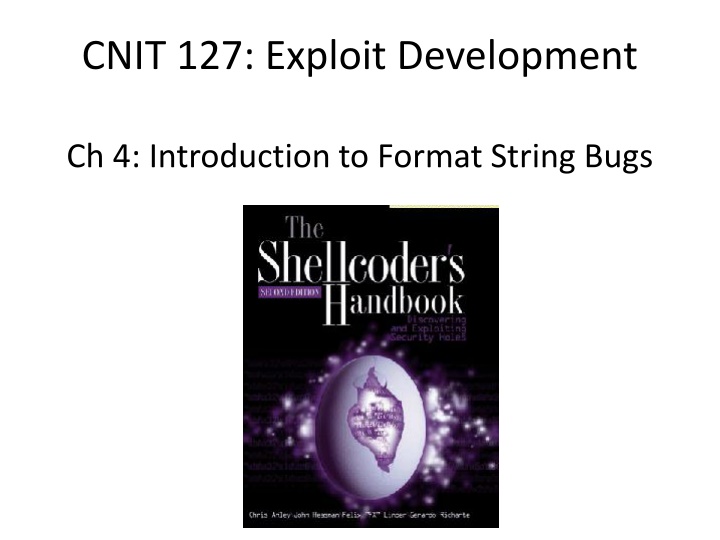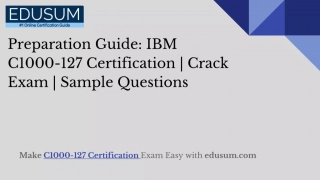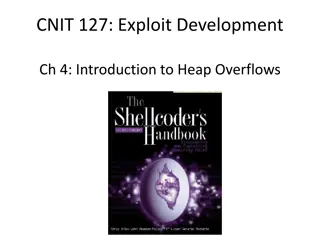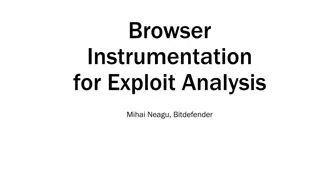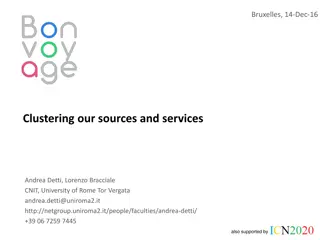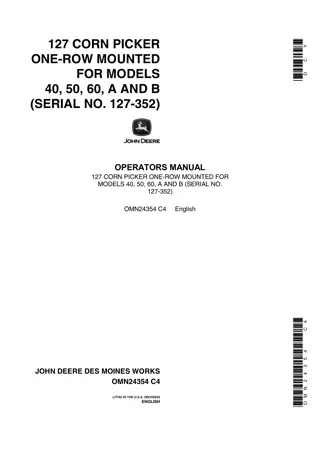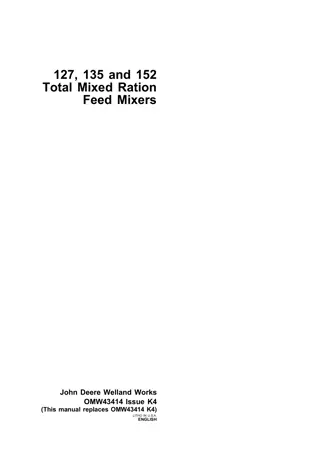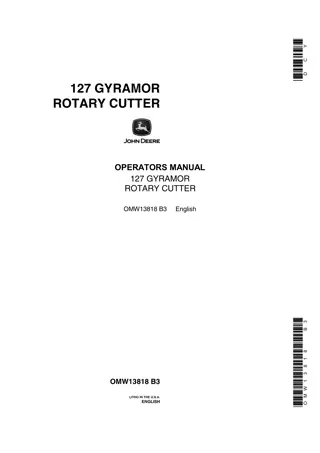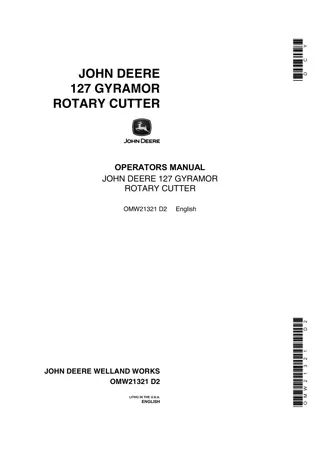CNIT 127: Exploit Development
Format string vulnerabilities, data interpretation in RAM, buffer overflow risks, and controlled attacks through format strings. Explore the impact of format string bugs on memory, information disclosure, and possible remote code execution. Learn about the printf family functions and how format strings can be exploited to manipulate memory locations and trigger denial-of-service attacks.
Uploaded on Feb 18, 2025 | 0 Views
Download Presentation

Please find below an Image/Link to download the presentation.
The content on the website is provided AS IS for your information and personal use only. It may not be sold, licensed, or shared on other websites without obtaining consent from the author.If you encounter any issues during the download, it is possible that the publisher has removed the file from their server.
You are allowed to download the files provided on this website for personal or commercial use, subject to the condition that they are used lawfully. All files are the property of their respective owners.
The content on the website is provided AS IS for your information and personal use only. It may not be sold, licensed, or shared on other websites without obtaining consent from the author.
E N D
Presentation Transcript
CNIT 127: Exploit Development Ch 4: Introduction to Format String Bugs
Data Interpretation RAM contains bytes The same byte can be interpreted as An integer A character Part of an instruction Part of an address Part of a string Many, many more...
Most Important for Us %x %8x %10x %100x Hexadecimal Hexadecimal padded to 8 chars Hexadecimal padded to 10 chars Hexadecimal padded to 100 chars
Buffer Overflow This code is obviously stupid char name[10]; strcpy(name, "Rumplestiltskin"); C just does it, without complaining
Format String Without Arguments printf("%x.%x.%x.%x"); There are no arguments to print! Should give an error message Instead, C just pulls the next 4 values from the stack and prints them out Can read memory on the stack Information disclosure vulnerability
%n Format String %n writes the number of characters printed so far To the memory location pointed to by the parameter Can write to arbitrary RAM locations Easy DoS Possible remote code execution
printf Family Format string bugs affect a whole family of functions
Defenses Against Format String Vulnerabilities Stack defenses don't stop format string exploits Canary value ASLR and NX Can make exploitation more difficult Static code analysis tools Generally find format string bugs gcc Warnings, but no format string defenses
Steps Control a parameter Find a target RAM location That will control execution Write 4 bytes to target RAM location Insert shellcode Find the shellcode in RAM Write shellcode to target RAM location
Control a Parameter Insert four letters before the %x fields Controls the fourth parameter Note: sometimes it's much further down the list, such as parameter 300
Target RAM Options Saved return address Like the Buffer Overflows we did previously Global Offset Table Used to find shared library functions Destructors table (DTORS) Called when a porgram exits C Library Hooks
Target RAM Options "atexit" structure (link Ch 4n) Any function pointer In Windows, the default unhandled exception handler is easy to find and exploit
Writing to Target RAM We now control the destination address, but not the value written there
Changing One Byte Add 16 to %16x Previously Now Each byte increased by 13
Inserting Dummy Shellcode \xcc is BRK
View the Stack in gdb Choose an address in the NOP sled
Testing for Bad Characters \x09 is bad
Testing for Bad Characters \x10 is bad
Testing for Bad Characters Started at 11 = 0x0b \x20 is bad
Testing for Bad Characters Started at 33 = 0x21 No more bad characters
Generate Shellcode msfvenom -p linux/x86/shell_bind_tcp -b '\x00\x09\x0a\x20' PrependFork=true -f python
Keep Total Length of Injection Constant May not be necessary, but it's a good habit
Final Check Address in NOP sled Shellcode intact
Shell (in gdb) Wait for the port to close Test it outside gdb
